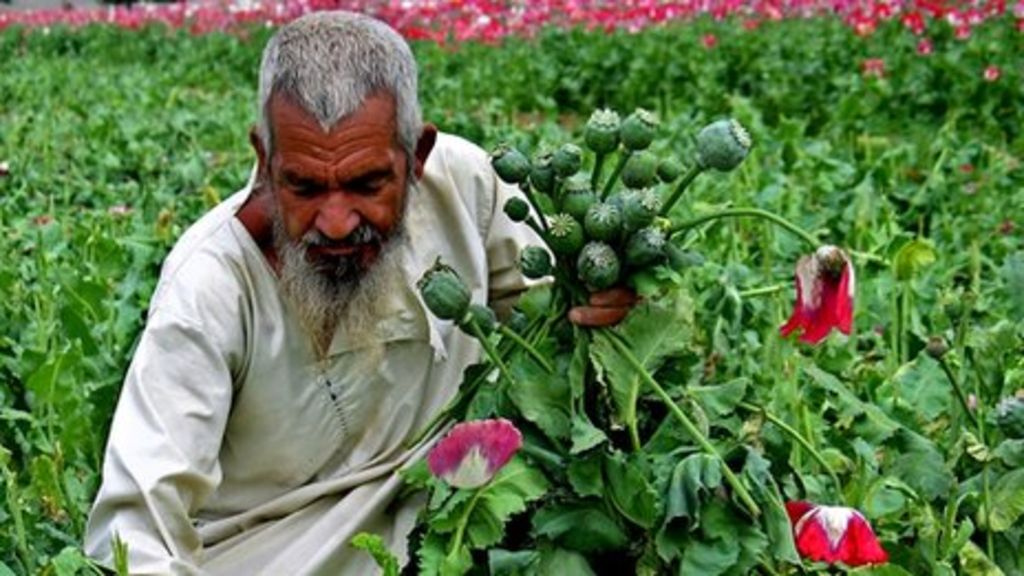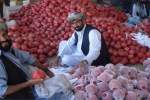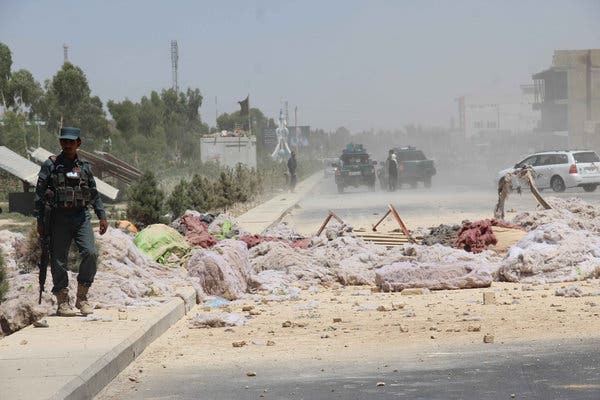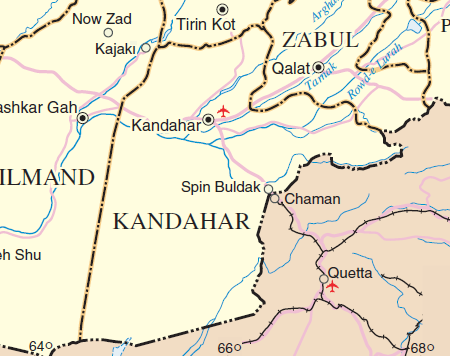In Afghanistan's southern Kandahar province where many farmers still highly depend on poppy opium to earn a living, some farmers revive hundreds of acres of fields after long years, to harvest up cotton instead of the illicit crop.
Publish dateSaturday 2 November 2019 - 01:28
Story Code : 194464
"Kandahar has nice climate for growing cotton. People used to plant cotton before the war and we want now to grow cotton again and earn a living by making money from legitimate crop," local farmer Sardar Mohammad told media recently.
As the climate changed and the farmlands are fed enough with seasonal rainfalls as well as poppy production restricted and the opium price dropped across the country, the official hoped cotton production could highly be focused as an alternative crops in the heavily poppy grown province.
Local officials and farmers want the government to provide the cotton farmlands with chemical pesticide, better farm technology and efficient cotton processing gin in Kandahar, 450 km south of Kabul.
Mohammad called on the government to help Kandahar farmers with providing support for reviving the cotton fields in the province, notorious for growing poppy and militancy.
"We need improved cotton seeds, we need more support, we need fertilizer and we need machinery to increase cultivation of cotton," Mohammad said.
Kandahar farmers planted cotton in 800 to 1,000 acres of land only in the Daman and Dand districts and harvested up over 2,250 tons this year, showing up to 20-percent increase comparing with last year, according to a local source.
"The produce is expected to rise to 40 percent in the future, if sufficient improved cottonseeds were distributed for the farmers," Sayed Hafizullah Sayyedi, director of Provincial Agriculture and Livestock Department, told media.
Lack of water and high poppy prices in the past resulted in the failure of farmers and activists to develop more cottonseeds plantation in the province, according to Sayedi.
A total of 13 cotton processing factories are operating in Kandahar province and cottons from other southern provinces such as Helmand, Zabul and Uruzgan are usually being brought to the province and exported to the neighboring countries after procession, he said.
Agriculture officials and farmers also call on the government to enable a major state-run cotton factory to re-open in Kandahar, so the farmers would be encouraged in cotton plantation instead of poppy.
"Kandahar was a drought-affected province, but the situation is better for agriculture in recent years. If government and local NGOs support us, we are ready to replace cotton planting with the opium poppy cultivation," another local farmer Akhtar Mohammad said.
He said cotton cultivation has been reviving in Kandahar and the cotton harvest has been increased by year on year.
In 2018, some 6,400 tons of illicit poppy opium were produced in western and southern parts of the country, where the government security forces have little presence, much less compared with 9,000 tons in 2017, according to official figures.
The decrease in opium production was attributed to the reduction in poppy cultivation, poppy fields destruction and drought which hit parts of the country's northern and western provinces, said the statement.
Afghanistan reportedly produces over 59,000 tons of cotton annually, but lack of cotton processing factories is still a challenge, as in the past there were at least seven textile manufacturing factories, mainly in Kabul, Parwan, Balkh, Kandahar and Baghlan provinces, which the country lost during the long years of war.
Cotton is also used to produce cooking oil and laundry soap, locally used in some of Afghan provinces.
Decades of war had a devastating impact on the agriculture sector in a country where over 80 percent of population relies on agriculture.
Only 12 percent of Afghanistan is arable and less than 6 percent is currently being cultivated.
As the climate changed and the farmlands are fed enough with seasonal rainfalls as well as poppy production restricted and the opium price dropped across the country, the official hoped cotton production could highly be focused as an alternative crops in the heavily poppy grown province.
Local officials and farmers want the government to provide the cotton farmlands with chemical pesticide, better farm technology and efficient cotton processing gin in Kandahar, 450 km south of Kabul.
Mohammad called on the government to help Kandahar farmers with providing support for reviving the cotton fields in the province, notorious for growing poppy and militancy.
"We need improved cotton seeds, we need more support, we need fertilizer and we need machinery to increase cultivation of cotton," Mohammad said.
Kandahar farmers planted cotton in 800 to 1,000 acres of land only in the Daman and Dand districts and harvested up over 2,250 tons this year, showing up to 20-percent increase comparing with last year, according to a local source.
"The produce is expected to rise to 40 percent in the future, if sufficient improved cottonseeds were distributed for the farmers," Sayed Hafizullah Sayyedi, director of Provincial Agriculture and Livestock Department, told media.
Lack of water and high poppy prices in the past resulted in the failure of farmers and activists to develop more cottonseeds plantation in the province, according to Sayedi.
A total of 13 cotton processing factories are operating in Kandahar province and cottons from other southern provinces such as Helmand, Zabul and Uruzgan are usually being brought to the province and exported to the neighboring countries after procession, he said.
Agriculture officials and farmers also call on the government to enable a major state-run cotton factory to re-open in Kandahar, so the farmers would be encouraged in cotton plantation instead of poppy.
"Kandahar was a drought-affected province, but the situation is better for agriculture in recent years. If government and local NGOs support us, we are ready to replace cotton planting with the opium poppy cultivation," another local farmer Akhtar Mohammad said.
He said cotton cultivation has been reviving in Kandahar and the cotton harvest has been increased by year on year.
In 2018, some 6,400 tons of illicit poppy opium were produced in western and southern parts of the country, where the government security forces have little presence, much less compared with 9,000 tons in 2017, according to official figures.
The decrease in opium production was attributed to the reduction in poppy cultivation, poppy fields destruction and drought which hit parts of the country's northern and western provinces, said the statement.
Afghanistan reportedly produces over 59,000 tons of cotton annually, but lack of cotton processing factories is still a challenge, as in the past there were at least seven textile manufacturing factories, mainly in Kabul, Parwan, Balkh, Kandahar and Baghlan provinces, which the country lost during the long years of war.
Cotton is also used to produce cooking oil and laundry soap, locally used in some of Afghan provinces.
Decades of war had a devastating impact on the agriculture sector in a country where over 80 percent of population relies on agriculture.
Only 12 percent of Afghanistan is arable and less than 6 percent is currently being cultivated.
avapress.net/vdch-knzk23nwkd.01t2.html
Tags
Top hits












